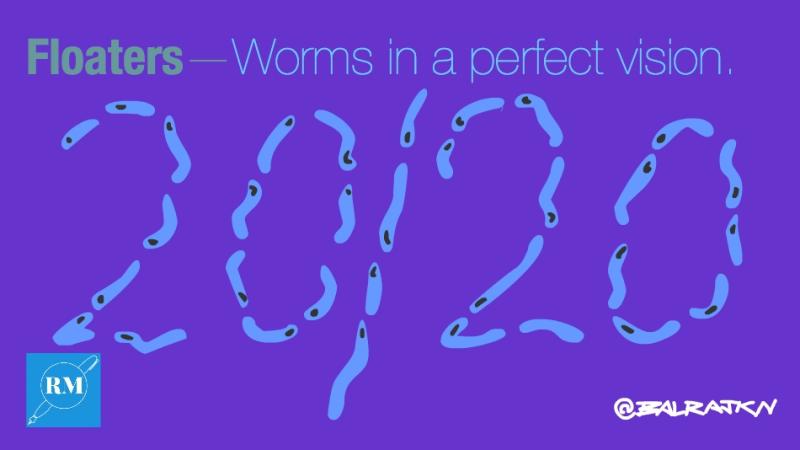
Have you ever stepped outside and looked up at the sky on a clear, summer day and noticed something swimming in your field of vision? Little transparent worms or blobs that seem to disappear whenever you try and get a closer look at them, only to reappear as soon as you shift your glance. These are ‘floaters’, or as the scientific community calls them- ‘muscae volitantes’, which is Latin for ‘hovering flies’.
Fret not, for these flies aren’t real insects. In fact, they aren’t even external objects, but shadows of particles found within your eyeball. Floaters are fragments of tissue, red blood cells or clumps of collagen — a protein that forms a part of the vitreous humor, the transparent, colourless gel-like substance found between the lens and the retina of the eyeball.
Floaters remain suspended in the vitreous humor and therefore drift about corresponding to your eye movements. They move, change shape and to bounce a little when your eye stops. It is this movement that makes them visible from time to time. However, attempting to shift your gaze toward them can be difficult as floaters follow the motion of the eye, remaining to the side of the direction of gaze.
Floaters are only barely distinguishable most of the time, but become more visible the closer they are to the retina. Contrary to their name, floaters tend to sink to the bottom of the eyeball, in whichever way you orient the eyeball. Hence, they become visible when we tilt our heads upwards to look at a clear sky.
A supine position allows floaters to concentrate at the back of the eyeball, which coincides with the yellow spot or macula. The macula is located in the centre of the retina and allows us to see things with maximum clarity. Floaters are thus able to catch and refract light in ways that somewhat blur the vision temporarily until the floater moves to a different area.
Textureless and evenly lit backdrops such as blank computer screens and clear skies are ideal for observing floaters since the pupil contracts on encountering bright light. It is analogous to replacing a large diffused light fixture such as a tube light with a single overhead bulb. The latter will often result in the formation of sharpened and more distinguishable shadows. You can also see floaters with your eyes closed on bright days when sufficient light penetrates the eyelids to cast the shadows.
Floaters present at birth usually remain lifelong while those that form during our lifetime, due to wear and tear of the eyeball and gradual accumulation of discarded cell debris in the vitreous humor, usually disappear within a few weeks. So, the next time a floater happens to drift into your field of vision, there’s no need to get paranoid. All it wants to do is bounce about in the jelly it is trapped it.
